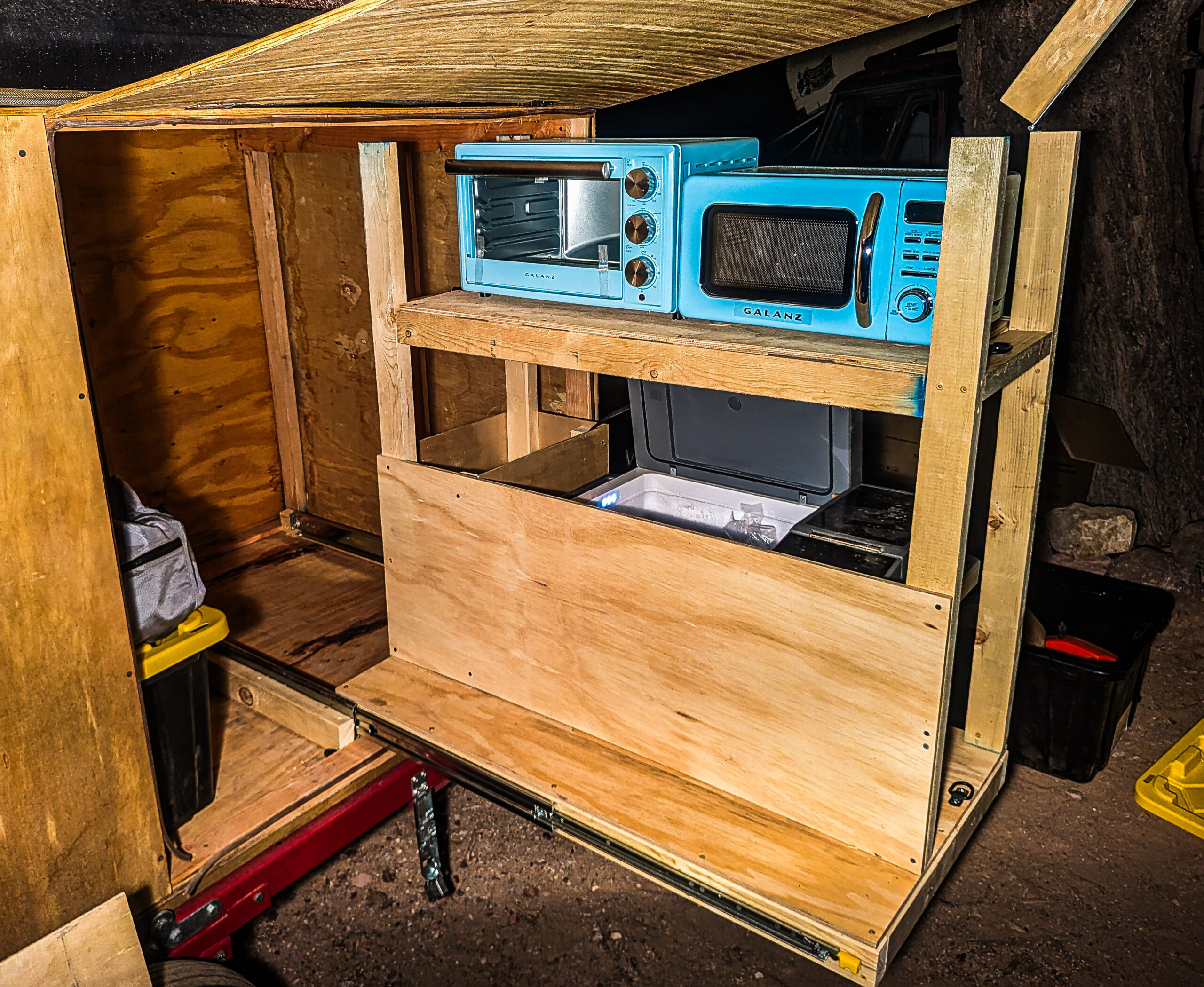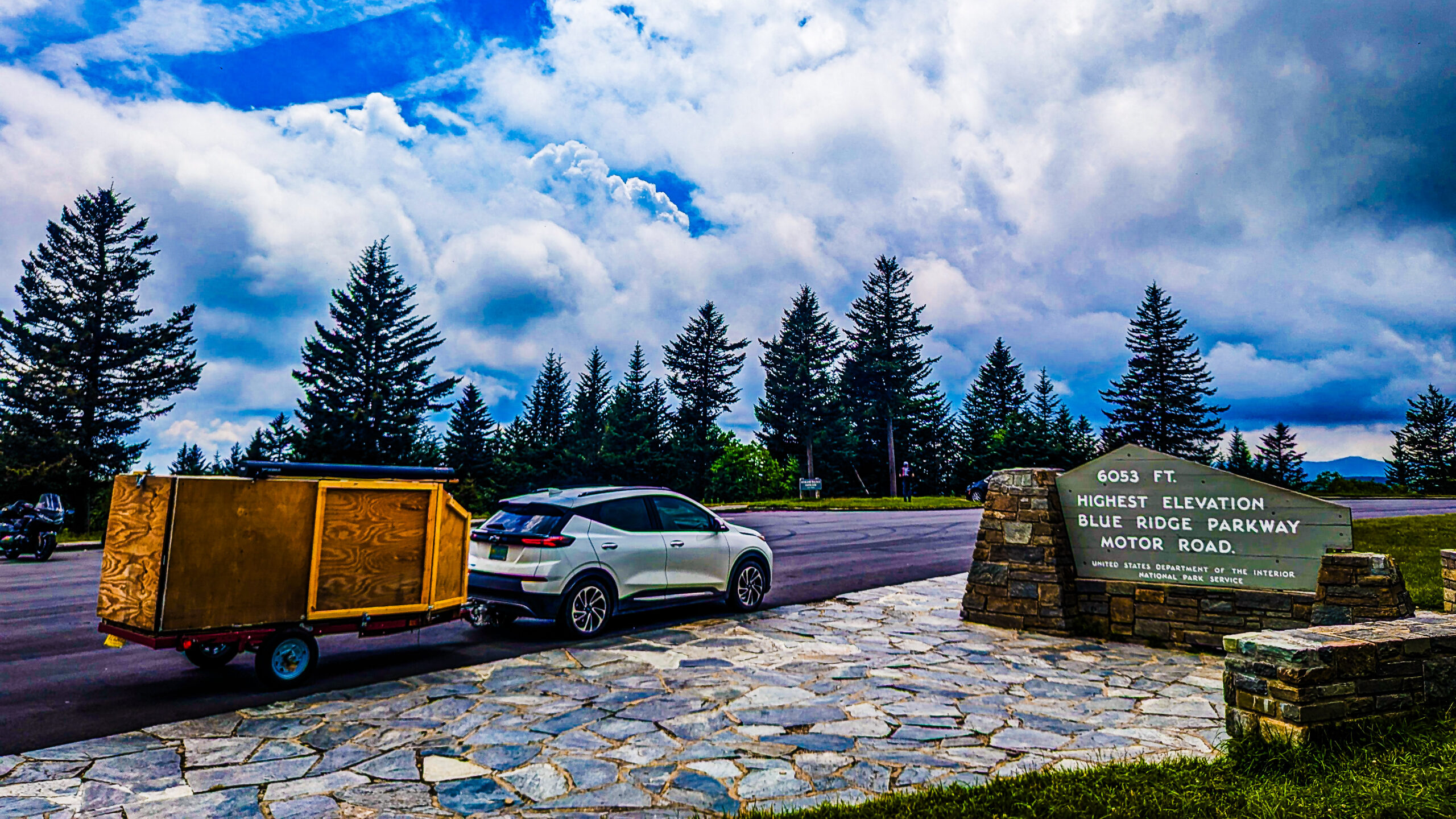Sign up for daily news updates from CleanTechnica on email. Or follow us on Google News!
I recently got an e-mail from OnStar telling me that I had a diagnostic report to read. But, seeing the date, I remembered that I had picked the Bolt EUV up in September of 2022 and it has now been two years since picking the car up. I figured I’d take this chance to review what the last two years with the vehicle has been like, and what this means not only for people looking at used Bolts, but for people considering newer Ultium-based GMs.
I Didn’t Take It Easy On The EUV
Most people buying a Bolt EUV (or the non-EUV) probably don’t have a lot of adventure in mind. The slightly bigger Bolt EUV is a little front-drive crossover, while the regular Bolt is a little hatchback. All-wheel-drive wasn’t available for any year or trim level of Bolt. Even the charging, based on older GM technology, is a paltry 55 kW, meaning that most charging stops are at least 35 minutes long on road trips, but only when EV charging stations are ideally spaced. When you have to go too long between charges, you end up spending an hour or perhaps more!
But, if you’re driving around on decent paved or gravel roads and mostly staying within range of a good home charger, none of these disadvantages ever really come into play. For commuting, there’s not a damned thing wrong with a Bolt. It’s got more torque and more horsepower than many turbocharged four-cylinder commuter cars, and the low-end torque from the electric motors makes it feel more like an old V8 in city driving. It’s comfortable, it has plenty of range for nearly all local driving, and depending on the model, it has room for a few passengers, too.
As far as practical commuters and daily driven vehicles go, it’s hard to beat the value of a Bolt, especially with the cheaper used prices for low-mileage examples.
But, I didn’t do the practical thing with my EUV. Sure, I did a lot of local driving and even regional driving and never had a problem. But, I wanted to share some of my more extreme adventures and then explain how they apply to people who aren’t going to push the vehicle as far as I did.
Rural Duty Is Fine With The Right Tires
It didn’t take me long to find the limits of the Bolt EUV wearing its stock shoes. Even with the stock Michelin energy saver tires, I had no problem going on gravel roads, even some fairly crappy ones. But, sand was another matter. Even sandy areas that I had taken my old two-wheel-drive Chevy TrailBlazer two years earlier were enough to quickly fill up the tread and sink the car. On top of that, there were some rocky shale-ridden roads that I was hesitant to go down for fear of puncturing the street-oriented tires.
Because I love exploring forest roads and going to somewhat remote campsites with the aforementioned sharp rocks, I upgraded to Michelin Defender LTX M/S tires. This made things a lot nicer, as the knobbier tires had better grip in nearly all conditions and had been made to handle nasty rocks. But, it came at the cost of going from a 3.5 miles/kWh to about 3.0 using A Better Route Planner’s OBD data collection. That meant losing about 15% of my range on the highway (something I tested on several drives across Texas).
So, if you live out away from the city on a not-so-great dirt road, I wouldn’t hesitate to consider the Bolt, especially the EUV model with the cushier suspension. With the right tires, it’s a good vehicle for people living in most rural areas as long as you have the power to charge it and you’re in reach of places within its range.
Highway Isn’t As Bad As People Say
As I mentioned above, I took the Bolt on several drives across Texas, and I’ve taken it all over New Mexico and parts of Arizona. On these unloaded drives, the experience wasn’t as bad as people claim. While it certainly takes more time than taking a gas-powered car to cover all that ground, I found that it’s reasonable to take on 500-600 miles per day going 80 MPH. Charging stops were about every 1.5-2 hours, and I’d charge for about 45 minutes to have more than enough range to make the next station.
Bolts are supposed to get Tesla Supercharger access soon (we aren’t sure how much Elon’s rage-firing has set that back), but even without access to Tesla’s charging stations, I had almost no problems. I was always able to get a charge and always managed to get where I was going with minimal hassle. The only tip I’d recommend before considering a Bolt for non-local drives is to use trip planning software like ABRP to plan where you’re going and see if it’s going to take too long.
Again, though, if the Bolt could handle long highways drives at high speeds, there’s no reason it can’t handle local freeway commuting.
Pulling A Cargo Trailer 4200 Miles
The toughest thing I’ve done with the Bolt EUV was to pull a custom cargo trailer from New Mexico to North Carolina and back. I originally built it to carry camping gear, including Shiftpod tents, a solar generator, solar panels, and a little slide-out kitchen—all powered from the Bolt’s battery! But, on this trip I was picking up some furniture, and ended up loading it to the roof, bringing the total weight to 1700 pounds.

I personally wouldn’t recommend doing this, though. The Bolt did just fine, but pulling this trailer cut the range down to about 2 miles/kWh, almost cutting the range in half. When there were plenty of charging stations spaced out evenly, I could drive for an hour and charge for 30 minutes. But, when the stations required charging up almost full and arriving with 10% charge, this meant driving for an hour and a half and charging for over an hour. In both cases, this means doing a lot of charging compared to driving.
It some ways, this wasn’t terrible, as I was able to do fun things like set up little picnics. Having a full kitchen, including a microwave and a freezer made that pretty enjoyable and even saved some money along the road trip. It was also good for powering things like air conditioning, heat, and all of the other comforts of home at campsites!
The only hiccup of any kind I experienced along the way, despite doing everything from the Blue Ridge Parkway to driving across the Great Plains, was one minor charging slowdown. It took driving in 103-degree (F) heat on rolling terrain with the battery below 25% before the vehicle’s battery heated up at all. There was no driving power loss like I had experienced with Nissan LEAFs, but it did charge at 20 kW for a bit before the cooling system kicked back in and things went back totally to normal.
Again, this is what it took (1700 lbs of trailer and some small furniture in the car on a 1o3-degree day on rolling hills) to get the vehicle to do anything out of the ordinary, and it wasn’t that bad. If you use the Bolt for things like commuting or even light towing around town, you shouldn’t have any problems at all.
Ultium and “Boltium” Should Be Pretty Good
If you’re looking for something that charges faster and uses newer technology than the Bolt, you’re probably going to be in good shape with vehicles like the Equinox EV, Blazer EV, Silverado EV as well as the upcoming refresh of the Bolt EUV. GM has a lot of experience building drivetrains, and they’ve done pretty good with the Bolt’s setup. Enough extra capacity was built in to do things like tow, drive across the country, etc.
That having been said, we would like to get our hands on some of these newer vehicles for testing, and will definitely put them through some tougher tests like this if we manage to do that!
Featured image (and all other images) by Jennifer Sensiba.
Have a tip for CleanTechnica? Want to advertise? Want to suggest a guest for our CleanTech Talk podcast? Contact us here.
Latest CleanTechnica.TV Videos

CleanTechnica uses affiliate links. See our policy here.
CleanTechnica’s Comment Policy
Read the full article here



